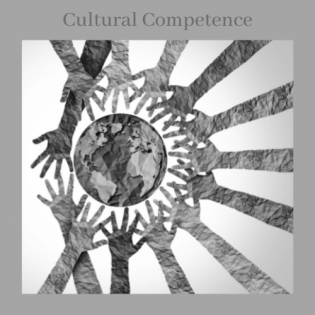The Language of Disability
This lesson explores the language of disability and the importance of asking people about themselves with curiosity rather than treating disabilities as taboo. We learn to use people-first language.
- recognize some of the disabilities all around us
- describe person-first language
For the purpose of this lesson, we will use the term “disability” when referring to a condition, but use person-first language (“person with a disability”) when referring to an individual. Some people or groups prefer the terms “differently abled” or “ability status” over “disability.” My most recent research has found overwhelming support from within the disabled community for the use of “disability.” Terminology itself is a component of this lesson, as there are many views on what is most respectful. The most important thing to remember is this: whenever possible, utilize an individual’s preferred terminology (and if you don’t know what they prefer, just ask!).
person-first language: when referring to a person with a disability, place the individual ahead of the disability or condition
Example: “person with Down Syndrome” instead of “Downs Kid”; “person who uses a wheelchair” instead of “wheelchair-bound” person
Many students are very forthcoming with their or a family member’s disability during these discussions. Allow the young people to share freely about themselves, but encourage respecting the privacy of others when needed.
Can you think of a time that you were left out of something for a reason outside of your control? Maybe you couldn’t ride a rollercoaster because of your height, or you couldn’t run track because of your asthma. How did that make you feel? Now that you know more about disabilities all around us, can you identify any ways that your group’s space can be more accessible to everyone?
- Video, “Charlie’s Lip Reading Challenge” https://youtu.be/PmHHVaYbNmY
- Just Ask by Sonia Sotamayor
- Learning to Give's literature guide for Just Ask
- Video, “Words Count” https://youtu.be/OWnMp07BqUQ
Instructions
Anticipatory Set:
Show the video, “Charlie’s Lip Reading Challenge.” Discuss with the group how the exercise felt and what made it difficult. Explain to the group that lipreading is one challenge that people who are deaf or hard of hearing encounter, and that people with disabilities have a lot of different experiences and skills that others might not have.
Read the book Just Ask by Sonia Sotamayor. The storyline for the book includes questions for the reader; allow the group to answer these questions and discuss. Young people often hear the different disabilities and conditions listed and share about someone they know (or themselves) who also has that disability/condition. This is a wonderful and organic way to illustrate just how common disabilities are, everywhere we go.
Inform the youth that it is important to ask questions when we want to learn more, but that it is also important to use kind, respectful language. Introduce the term person-first language: when referring to a person with a disability, place the individual ahead of the disability or condition. Work through some examples of person-first language utilizing the book, so that the children have an opportunity to practice.
Show the video, “Words Count.” Close with a discussion that using kind, respectful language is one way that the youth can demonstrate cultural competence with regard to disabilities.
Giving back to the community: Is your school or community inclusive and accommodating for people with disabilities? Here are some ideas of service projects your group can do!
- Build a buddy bench at the school or neighborhood playground
- Launch a disability awareness campaign
- Take a community walk to look for curb cuts, accessible parking and accessible entrances to public spaces. If there is inadequate accessibility, write to your local government to make changes.
Philanthropy Framework
-
Strand PHIL.I Definitions of Philanthropy
-
Standard DP 02. Roles of Government, Business, and Philanthropy
-
Benchmark MS.1 Describe how different needs are met in different ways by government, business, civil society, and family.
-
-
-
Strand PHIL.II Philanthropy and Civil Society
-
Standard PCS 05. Philanthropy and Government
-
Benchmark MS.1 Identify different types of communities with which an individual might identify.
-
-
